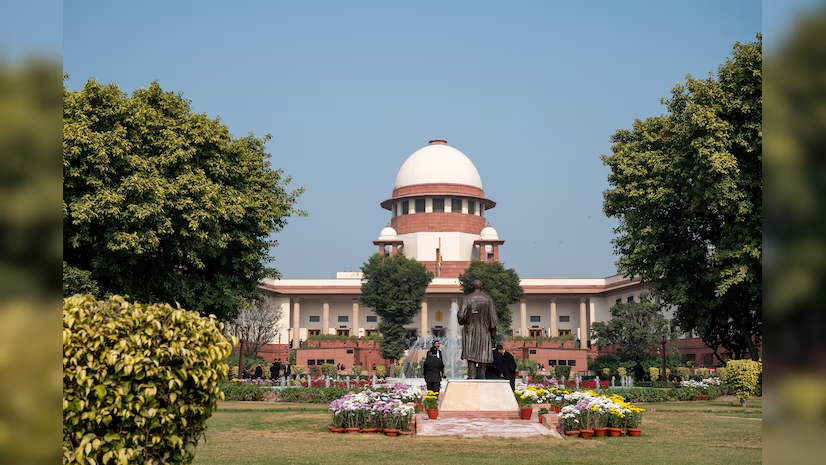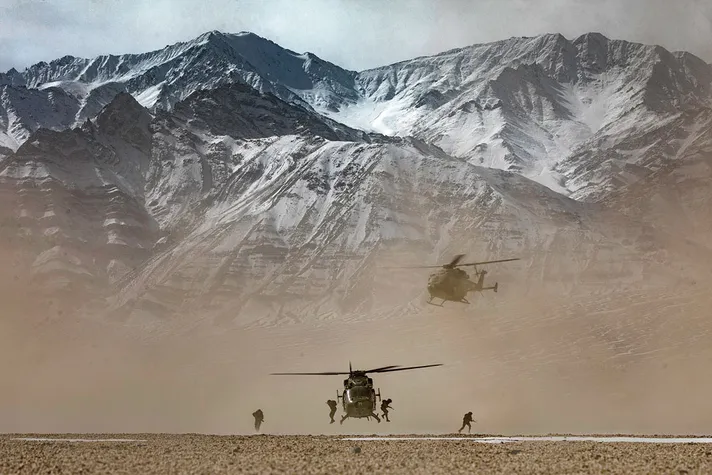- Courses
- GS Full Course 1 Year
- GS Full Course 2 Year
- GS Full Course 3 Year
- GS Full Course Till Selection
- Online Program
- GS Recorded Course
- NCERT (Recorded 500+ Hours)
- Polity Recorded Course
- Geography Recorded Course
- Economy Recorded Course
- AMAC Recorded Course
- Modern India, Post Independence & World History
- Environment Recoded Course
- Governance Recoded Course
- Science & Tech. Recoded Course
- International Relations and Internal Security Recorded Course
- Disaster Management Module Course
- Ethics Recoded Course
- Essay Recoded Course
- Current Affairs Recoded Course
- CSAT
- 5 LAYERED ARJUNA Mentorship
- Public Administration Optional
- ABOUT US
- OUR TOPPERS
- TEST SERIES
- FREE STUDY MATERIAL
- VIDEOS
- CONTACT US
PLACES IN NEWS 22nd MARCH 2025
PLACES IN NEWS 22nd MARCH 2025
22-03-2025

Jim Corbett Tiger Reserve
Why in news?
- The Supreme Court criticized the Uttarakhand government for its slow action against senior officials accused of illegal constructions in Jim Corbett Tiger Reserve.
About Jim Corbett Tiger Reserve:
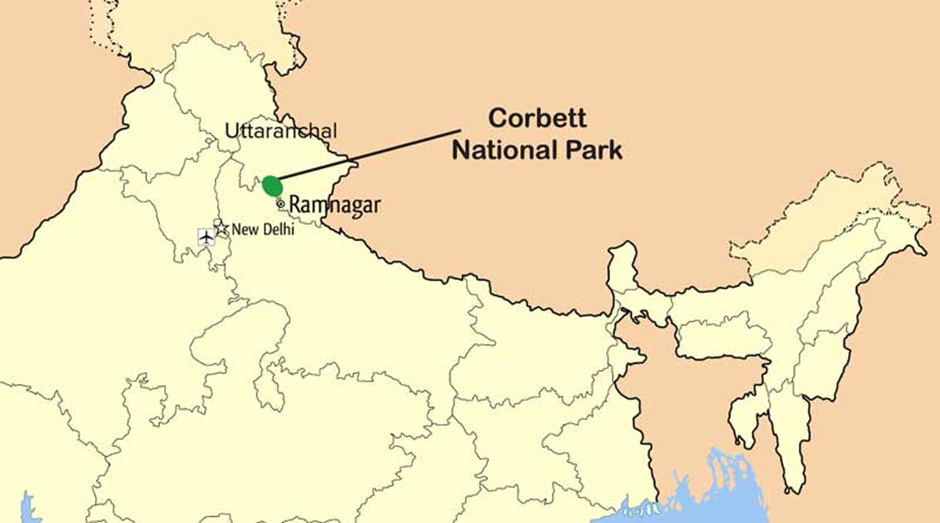
- Location and Geography:
- Jim Corbett Tiger Reserve is located in the foothills of the Himalayas in Uttarakhand.
- It spans 1,288.31 sq. km, covering undulating terrain with valleys, riverine belts, and grasslands.
- The reserve is traversed by the Ramganga, Pallaen, and Sonanadi rivers, which sustain its rich biodiversity.
- The landscape primarily consists of Bhabar and lower Shivalik regions, featuring porous tracts with boulders and sand deposits.
- Flora and Fauna:
- The reserve hosts Sal and mixed forests, along with extensive grasslands (Chaur), which resulted from abandoned settlements.
- The dominant tree species include Sal, Sheesham, and Kanju, while Lantana, an invasive weed, poses ecological challenges.
- Tigers and elephants are the flagship species, alongside leopards, sambar, hog deer, and spotted deer.
- The reserve is also home to gharials, crocodiles, numerous bird species, and diverse fish populations, enhancing its ecological significance.
- Illegal Construction in the Region:
- Unauthorized buildings have been constructed within protected areas, violating environmental norms and disrupting wildlife habitats.
- Senior government officials have been accused of allowing illegal resorts and structures, leading to legal scrutiny and Supreme Court intervention.
Mount Lewotobi
Why in news?
- Indonesia's Lewotobi Laki-laki volcano erupted, prompting authorities to cancel some Bali flights due to ash clouds and aviation safety concerns.
About Mount Lewotobi:
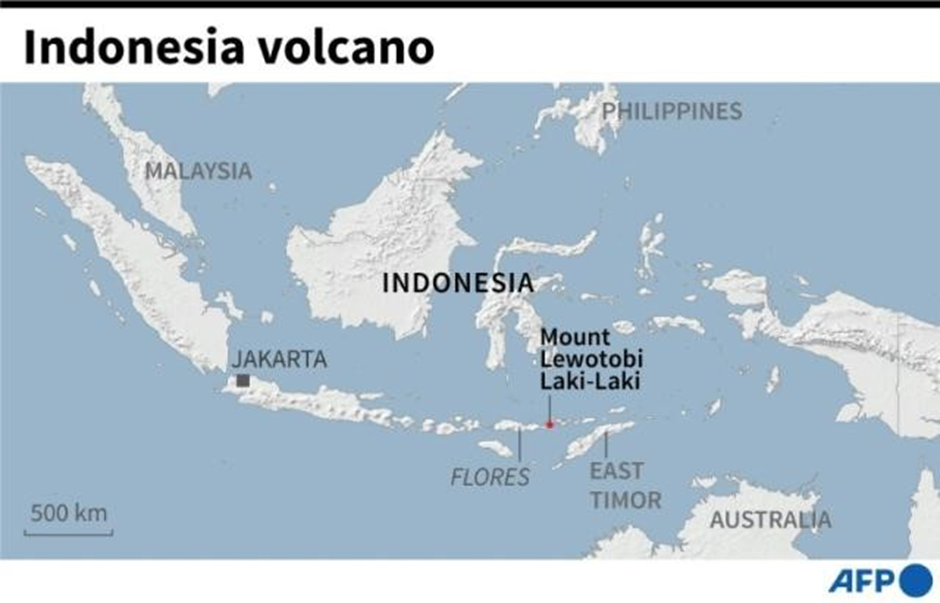
- Location and Features:
- Mount Lewotobi is a twin stratovolcano located in East Flores Regency, Indonesia, on the eastern end of Flores Island.
- It consists of two volcanic peaks: Lewotobi Laki-laki ("Male Lewotobi") and Lewotobi Perempuan ("Female Lewotobi"), both active and known for frequent eruptions.
- The surrounding region features dense forests, steep slopes, and fertile volcanic soil, supporting agriculture and human settlements.
- Lewotobi is part of Indonesia’s Sunda Arc, a chain of volcanoes formed due to subduction of the Indo-Australian Plate beneath the Eurasian Plate.
- Reason Behind the Eruption and Past Eruptions:
- The eruption of Lewotobi Laki-laki was triggered by magma movement and gas build-up beneath the Earth’s crust, causing ash plumes and potential lava flows.
- Indonesia lies on the Pacific Ring of Fire, making it highly prone to volcanic activity due to constant tectonic movements.
- Past eruptions of Lewotobi have been recorded multiple times, including significant eruptions in 1921, 1935, and 2003, often affecting nearby communities.
- The latest eruption led to ash clouds disrupting flights in Bali, highlighting its impact on regional air travel and public safety.
- The region’s volcanic activity contributes to fertile land but also poses risks like earthquakes, tsunamis, and eruptions, affecting local populations.
Laokhowa-Burhachapori Wildlife Sanctuary
Why in news?
- A sniffer dog was deployed in Assam's Laokhowa-Burhachapori Wildlife Sanctuary to help combat wildlife crimes like poaching and illegal trafficking.
About Laokhowa-Burhachapori Wildlife Sanctuary:
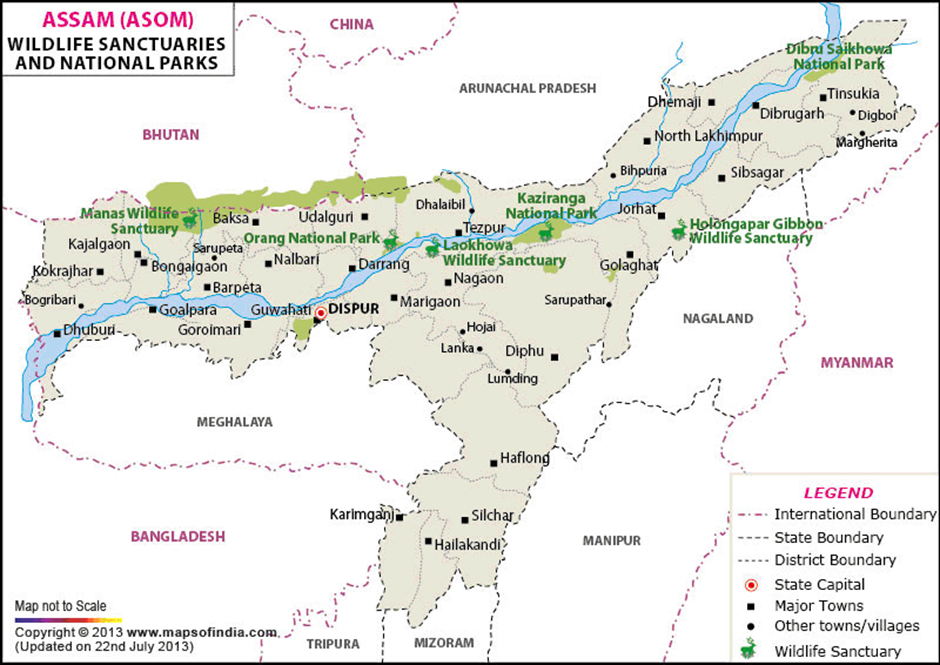
- Location:
- Laokhowa-Burhachapori Wildlife Sanctuary is located in Nagaon district, Assam, covering 70.13 sq. km on the southern bank of the Brahmaputra River.
- It forms part of the Laokhowa-Burhachapori ecosystem, an important corridor for wildlife movement.
- The sanctuary experiences a subtropical monsoon climate, with distinct wet and dry seasons affecting vegetation and animal behaviour.
- Flora and Fauna:
- The sanctuary consists of grasslands, wetlands, and swampy forests, providing an ideal habitat for herbivores and water-dependent species.
- It was once home to over 70 Indian rhinos, but rampant poaching in the 1980s led to their local extinction.
- Key species include Asiatic water buffaloes, Bengal tigers, leopards, wild boars, hog deer, and leopard cats.
- Over 200 bird species, including migratory birds, make it a significant birdwatching site.
- Wildlife Crimes in the Region:
- Poaching and Illegal Hunting: Laokhowa-Burhachapori Wildlife Sanctuary has witnessed rampant poaching of Indian rhinos, leading to their local extinction in the 1980s. Other species like Asiatic water buffaloes and deer are also targeted.
- Smuggling and Illegal Trade: The region is vulnerable to wildlife trafficking, with animal parts like rhino horns, tiger skins, and ivory being illegally traded.
- Encroachment and Habitat Destruction: Illegal settlements, cattle grazing, and deforestation threaten the sanctuary, reducing space for wildlife and increasing human-animal conflicts.
Sahara Desert
Why in news?
- Unusual storms in the Sahara Desert caused heavy rainfall, leading to the formation of temporary lakes in the arid landscape.
About Sahara Desert:
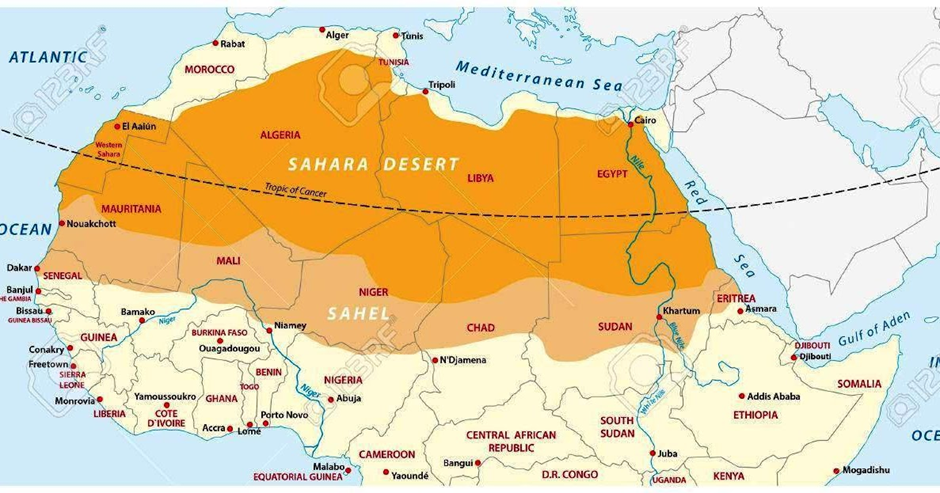
- Location and Features:
- The Sahara Desert is the largest hot desert in the world, spanning North Africa across 11 countries, including Algeria, Egypt, Libya, Chad, Mali, and Sudan.
- It covers approximately 9.2 million square kilometres, making it almost as large as the United States.
- The Sahara is characterised by vast sand dunes, rocky plateaus, gravel plains, dry valleys, and salt flats.
- It has an arid climate, with daytime temperatures exceeding 50°C and nights dropping to near freezing.
- Formation of the Sahara Desert:
- The Sahara was not always a desert; around 10,000 years ago, it was a lush green landscape with lakes, rivers, and abundant wildlife.
- The shift from a wet climate to extreme aridity occurred due to changes in the Earth’s orbit and axial tilt, altering monsoon patterns.
- Over thousands of years, reduced rainfall and increased evaporation transformed the region into the arid desert seen today.
- Expansion of the Sahara Desert:
- In recent decades, the Sahara has been expanding southward, encroaching on the Sahel region at an estimated rate of 48 kilometres per year.
- Climate change, deforestation, and unsustainable agricultural practices have accelerated desertification, reducing arable land and affecting millions of people.
- Countries like Niger, Chad, and Sudan are experiencing water shortages, crop failures, and displacement of communities due to this expansion.
- Unusual Storms and Formation of Temporary Lakes
- Scientists have observed that rare, intense storms in the Sahara occasionally lead to the formation of temporary lakes, challenging the idea that the desert is completely dry.
- A study conducted in north-western Algeria focused on Sebkha el Melah, a normally dry lakebed that temporarily fills with water after extreme rainfall.
- Satellite data from 2000 to 2021 identified only six significant lake-filling events (LFEs), showing that such lakes form only after exceptionally powerful storms.
- Causes of These Rare Storms
- Extratropical cyclones from the Atlantic Ocean are a key factor, bringing moisture-rich air into the desert.
- Instead of being blocked by the Atlas Mountains, some storms manage to bypass the rain shadow effect, delivering heavy precipitation into low-lying desert basins.
- Slow-moving Cyclones contribute to longer, more intense rainfall, increasing the likelihood of lake formation.
6. Implications for Climate Change and Future Patterns
- Climate models suggest that rising global temperatures may increase the frequency and intensity of storms in the Sahara.
- More frequent flooding events could provide temporary relief to water-scarce regions, though they won’t transform the desert into a permanent wetland.
- Understanding these rare events is crucial for predicting future climate shifts and assessing how desert ecosystems and human populations may adapt to changing rainfall patterns.
Ganga River
Why in news?
- Uttarakhand Chief Minister announces plans to develop corridors along Ganga, Sharda rivers, to boost tourism.
About Ganga River:
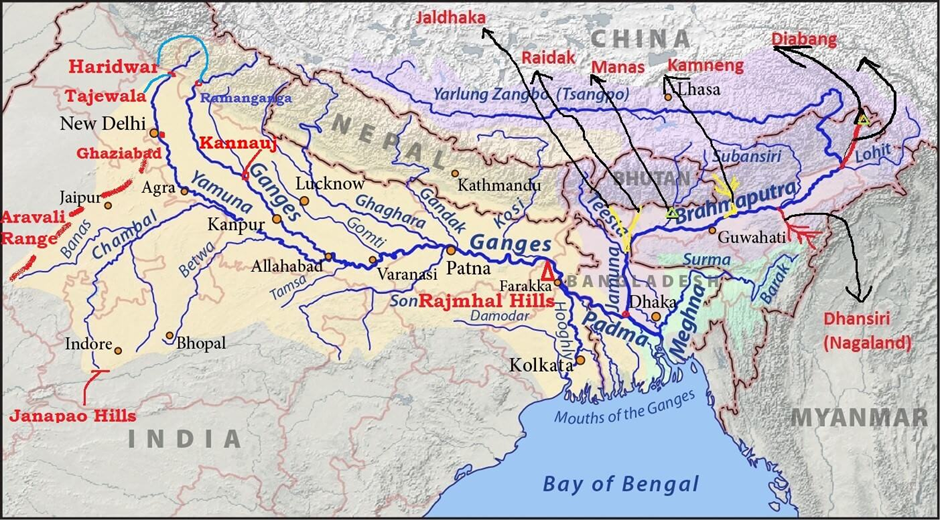
- Origin and Course:
- The Ganga River originates from the Gangotri Glacier in the Himalayas at Gaumukh, Uttarakhand, at an elevation of 3,892 meters.
- The Bhagirathi, the primary source, merges with the Alaknanda at Devprayag, forming the Ganga.
- It traverses five states: Uttarakhand, Uttar Pradesh, Bihar, Jharkhand, and West Bengal, covering approximately 2,525 km.
- The river bifurcates at Farakka, with the Padma flowing into Bangladesh and the Hooghly flowing into the Bay of Bengal.
- Tributaries:
- Major right-bank tributaries: Yamuna, Son, Punpun, and Damodar.
- Major left-bank tributaries: Ramganga, Gomti, Ghaghara, Gandak, Kosi, and Mahananda.
- Ecological and Cultural Significance:
- The Ganga basin supports about 40% of India’s population, playing a crucial role in agriculture, industry, and livelihoods.
- It holds immense religious significance in Hinduism, with sacred sites like Haridwar, Varanasi, and Prayagraj along its course.
- The riverine ecosystem supports diverse flora and fauna, including the endangered Ganges river dolphin and gharial.
- Pollution and Conservation Efforts:
- The Ganga faces severe pollution due to industrial waste, sewage discharge, and religious activities.
- Key pollutants include heavy metals, untreated sewage, and plastic waste.
- Conservation initiatives include the Namami Gange Programme, aimed at sewage treatment, river surface cleaning, and afforestation.
- The National Mission for Clean Ganga (NMCG) oversees river rejuvenation projects, promoting bio-remediation and public participation.
- Various court rulings and environmental activism have emphasised sustainable river management and pollution control.
About Sharda River
- Origin and Course:
- The Sharda River originates as the Kali (Mahakali) River from the Great Himalayas in Uttarakhand, at an elevation of 3,600 meters.
- It forms part of the India-Nepal border before entering the Indo-Gangetic Plain at Brahmadev Mandi in Nepal.
- It flows southeastward into Uttar Pradesh and merges with the Ghaghara River southwest of Bahraich, covering approximately 480 km.
- Irrigation and Hydroelectric Projects:
- The Sharda Barrage (Upper Sharda Barrage), constructed in the 1920s, is crucial for irrigation in Uttar Pradesh.
- The Tanakpur Hydroelectric Project (120 MW), commissioned in 1993, utilises the river’s flow for power generation.
- The Pancheshwar Multipurpose Project (PMP), a joint India-Nepal venture, aims to generate 5,600 MW of hydroelectric power and enhance irrigation.
- Other Key Facts:
- The Mahakali Treaty (1996) governs the integrated development of the Sharda River between India and Nepal, ensuring equitable water use.
- The river receives major tributaries like Darma, Gori Ganga, Sarju, and Ladhiya, contributing to its flow.
- The Sharda River is also considered for India’s River Inter-linking Project, aimed at optimising water resources for irrigation and drinking purposes.
- The river plays a vital role in the Terai region’s ecosystem, supporting agriculture, fisheries, and biodiversity conservation.
|
UPSC CSE PYQs Q1. With reference to the Himalayan rivers Joining the Ganga downstream of Prayagraj from West to East, which one of the following sequences is correct? (2024)
Answer: Option B
|
|
Also Read |
|
| Public Administration Optional | |
| UPSC Monthly Magazine | Question Answer Practice For UPSC |



